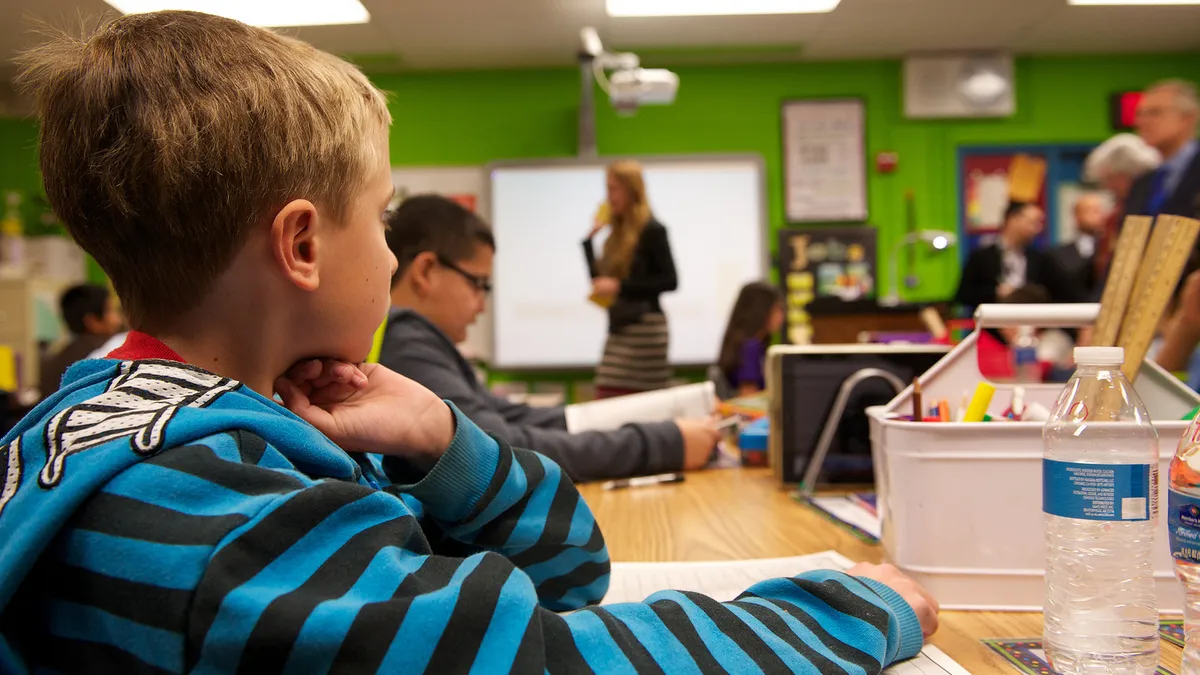Dive Brief:
- New research from the National Bureau of Economic Research looks at California’s effort to slash elementary school class sizes in the late '90s, with a side effect of the move being that it drew white private-school students into public schools, Chalkbeat reports.
-
Private school enrollment dropped by nearly 2% in select grades, with public schools located near a private school enrolling more white students — and in middle school, where class sizes went back to normal, many students transferred back to private school.
- However, hiring criteria for teachers was loosened, as California needed to hire many teachers as quickly (and inexpensively) as possible to take over all the additional classrooms — a move seen as reducing somewhat the benefits of the smaller classes.
Dive Insight:
School segregation plagues districts across the country, but particularly in urban districts like Los Angeles, New York City and Chicago. A big hurdle is that few white students are enrolled in the public schools. White families in big cities tend to — if they don't move to suburban enclaves as their children hit school age — enroll their kids in private school.
While, of course, there's more to the school segregation picture than that, reducing class sizes is being looked at as one possible measure to integrate predominantly minority districts that have private schools nearby. A smaller class size is a school attribute that parents across the board care about, and it has the bonus of being a concept that is both easy to see and understand. Teachers, perhaps unsurprisingly, support smaller class sizes, too. Plus, the California study (which hasn't yet been peer-reviewed) showed that the influx of private-school pupils boosted the other kids' test scores, though the exact reason why is unclear.
But administrators interested in exploring this approach should know the caveats. As the California study showed, mass hiring can translate to less-experienced teachers — at least in the beginning stages of the effort, which can make the benefits reaped from the smaller classes little more than a wash. A study in New York City, as reported by Chalkbeat, also bore that out.
The teacher-quality issue aside, some kids (or most, depending on age) don't respond well to change and disruption, which implementation of the measure would obviously bring about. The net gains may not justify the costs, which are significant even aside from teacher compensation. The more successful efforts around lowering class sizes are in getting private school students to make the switch, which raises the amount of per-pupil funding a district needs. This will require administrators to keep policymakers updated on the changing school populations and ensure the need for additional funding is known.
In the end, administrators might look at not only what benefits smaller classes can yield and under what circumstances, but whether that large amount of money might be spent on something else that could better impart those results.











